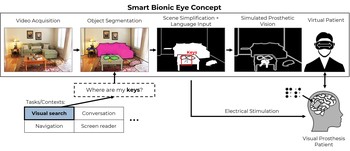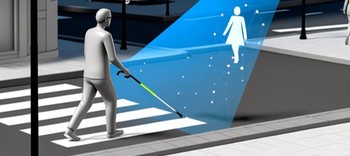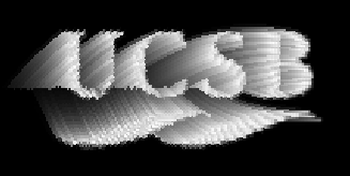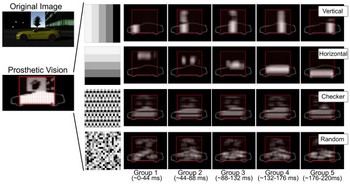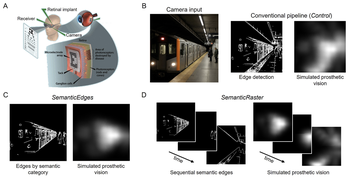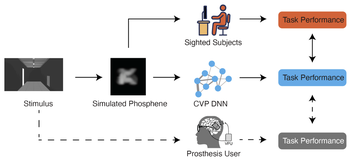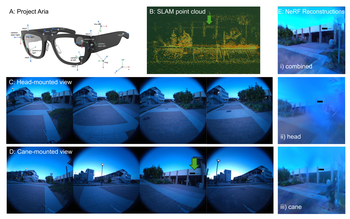Rather than aiming to one day restore natural vision, we might be better off thinking about how to create practical and useful artificial vision now.
Apurv Varshney is currently a first-year PhD student pursuing a PhD in Computer Science at UC Santa Barbara. He is interested in improving Bionic Vision using Computer vision and human computer interaction (HCI) techniques.
In his free time he enjoys hiking and playing tennis.
- 3205 BioEngineering
- apurv@ucsb.edu
Honors & Awards
- Outstanding TA Award, CS, UCSB (2025)
Education
-
PhD in Computer Science, 2027 (expected)
University of California, Santa Barbara
-
BTech (Bachelors of Technology) in Computer Science, 2020
Indian Institute of Technology (IIT), Goa
Project Lead
Assistive Technologies for People Who Are Blind
This research explores the integration of computer vision into various assistive devices, aiming to enhance urban navigation and environmental interaction for individuals who are blind or visually impaired.
BionicVisionXR: An Open-Source Virtual Reality Toolbox for Bionic Vision
BionicVisionXR is an open-source virtual reality toolbox for simulated prosthetic vision that uses a psychophysically validated computational model to allow sighted participants to “see through the eyes” of a bionic eye recipient.
Project Affiliate
pulse2percept: A Python-Based Simulation Framework for Bionic Vision
pulse2percept is an open-source Python simulation framework used to predict the perceptual experience of retinal prosthesis patients across a wide range of implant configurations.
Publications
Simulated prosthetic vision confirms checkerboard as an effective raster pattern for epiretinal implants
Using an immersive VR system, we systematically evaluated two behavioral tasks under four raster patterns (horizontal, vertical, checkerboard, and random) and found checkerboard raster to be the most effective.
Justin M. Kasowski, Apurv Varshney, Roksana Sadeghi, Michael Beyeler Journal of Neural Engineering 22 046017
Static or temporal? Semantic scene simplification to aid wayfinding in immersive simulations of bionic vision
We compare two complementary approaches to semantic preprocessing in immersive virtual reality: SemanticEdges, which highlights all relevant objects at once, and SemanticRaster, which staggers object categories over time to reduce visual clutter.
Justin M. Kasowski, Apurv Varshney, Michael Beyeler arXiv:2507.10813
A deep learning framework for predicting functional visual performance in bionic eye users
We introduce a computational virtual patient (CVP) pipeline that integrates anatomically grounded phosphene simulation with task-optimized deep neural networks to forecast patient perceptual capabilities across diverse prosthetic designs and tasks. We evaluate performance across six visual tasks, six electrode configurations, and two artificial …
Jonathan Skaza, Shravan Murlidaran, Apurv Varshney, Ziqi Wen, William Wang, Miguel P. Eckstein, Michael Beyeler bioRxiv
Beyond physical reach: Comparing head- and cane-mounted cameras for last-mile navigation by blind users
We evaluate head- and cane-mounted cameras for blind navigation and show that combining both yields superior spatial perception, guiding the design of hybrid, user-aligned assistive systems.
Apurv Varshney, Lucas Nadolskis, Tobias Höllerer, Michael Beyeler arXiv:2504.19345
Stress affects navigation strategies in immersive virtual reality
We used immersive virtual reality to develop a novel behavioral paradigm to examine navigation under dynamically changing, high-stress situations.
Apurv Varshney, Mitchell Munns, Justin Kasowski, Mantong Zhou, Chuanxiuyue He, Scott Grafton, Barry Giesbrecht, Mary Hegarty, Michael Beyeler Scientific Reports
(Note: AV and MM contributed equally to this work.)
